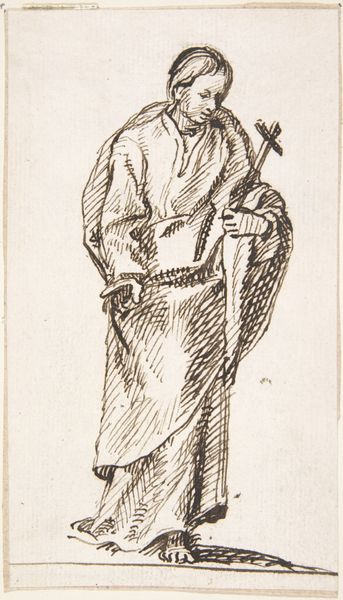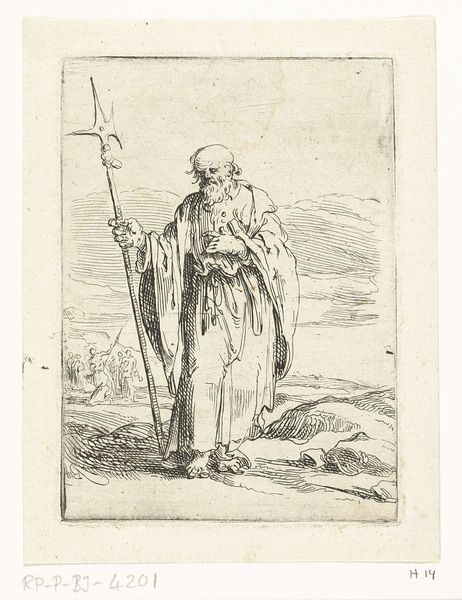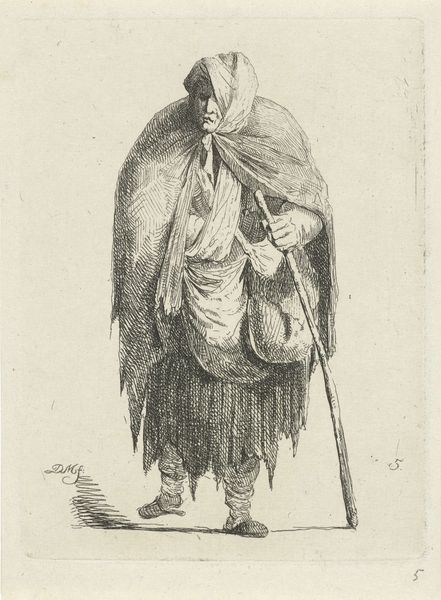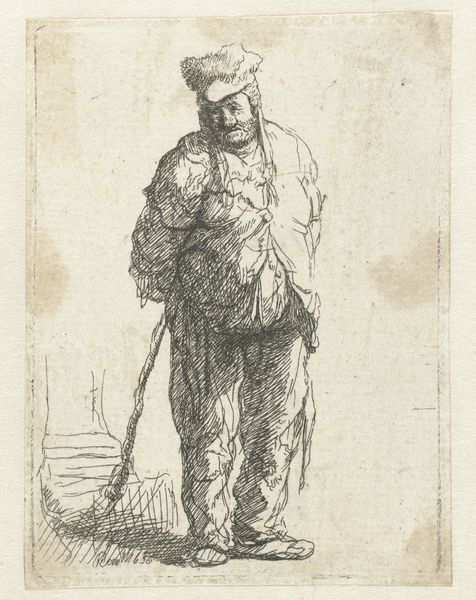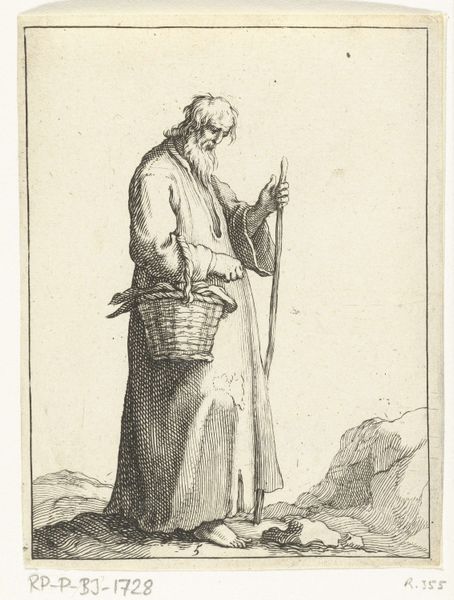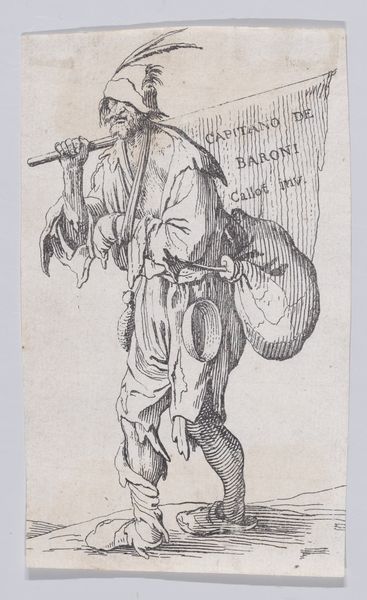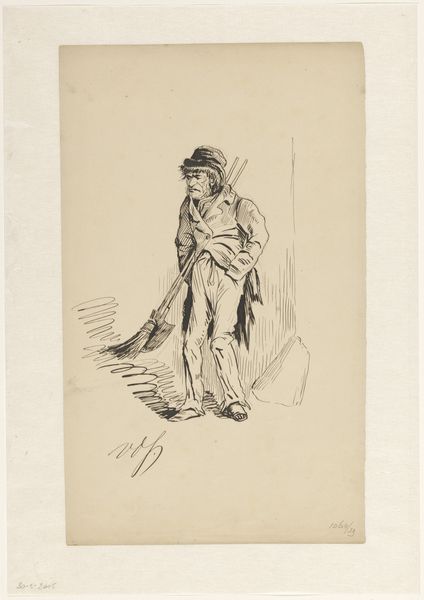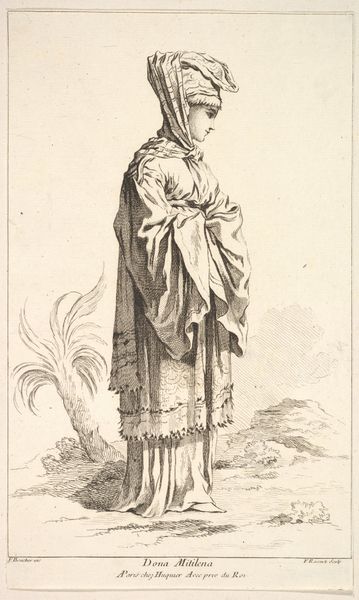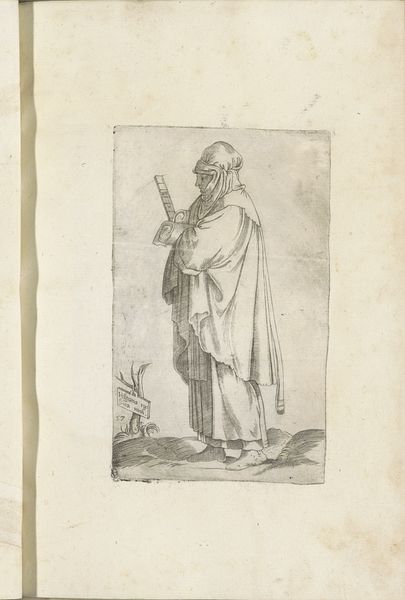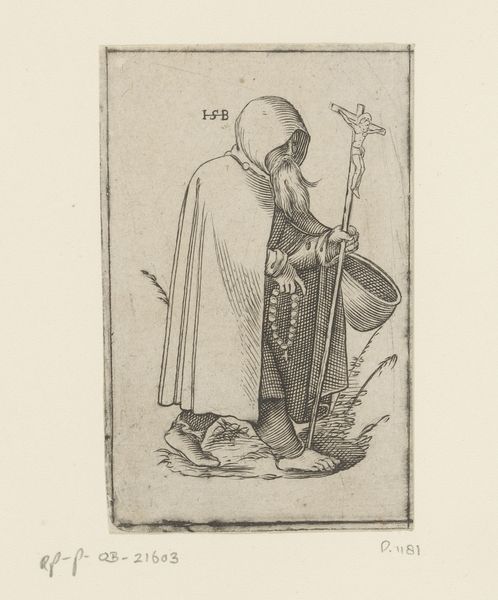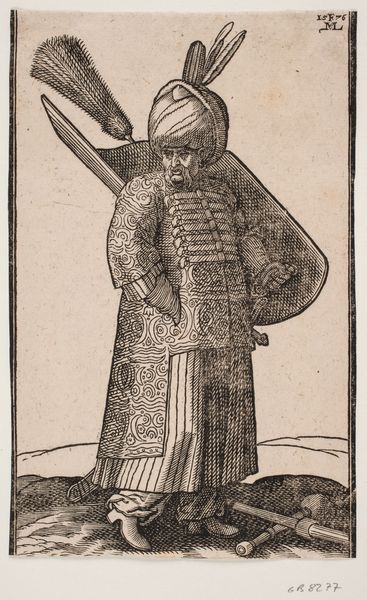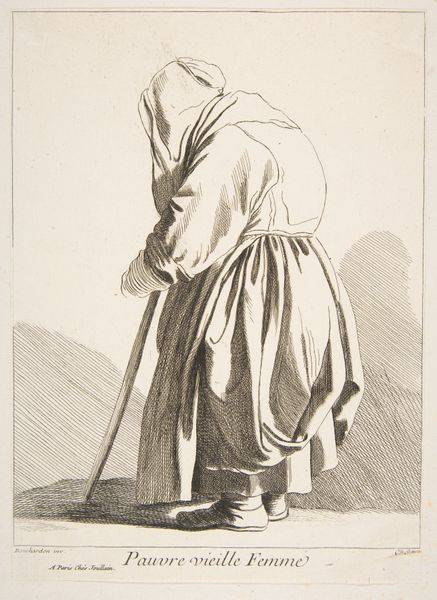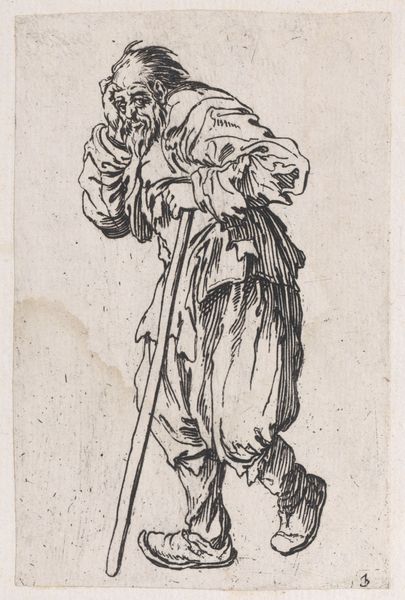
print, engraving
#
portrait
# print
#
old engraving style
#
figuration
#
romanticism
#
genre-painting
#
engraving
Dimensions: height 114 mm, width 83 mm
Copyright: Rijks Museum: Open Domain
Editor: We are looking at "Turkse man met pijl en boog," or "Turkish Man with Bow and Arrow," an engraving by Bernard Eugène Antoine Rottiers, from 1807. I'm struck by the almost ethnographic quality of it – a study of a particular individual. What aspects of this print do you find most compelling? Curator: It's fascinating how Rottiers, working in a Romantic era fascinated by the "Orient," frames this individual. Consider the social and political context. What did "Turkey" or the "Orient" represent to European audiences in the early 19th century? This image, although seemingly a straightforward depiction, is participating in the construction of "the other". It speaks to the power dynamics inherent in how different cultures were represented. Editor: So, this image isn't just a neutral observation? Curator: Precisely. Images like this played a role in shaping European perceptions and prejudices. Think about who was commissioning these works, and what narratives they sought to reinforce. How does this relate to European Imperial expansion? The attire, the weaponry – they aren't just details, but potent symbols laden with meaning. This work also shows an emerging shift towards cultural documentation within the arts. What do you notice about the setting of the print? Editor: It’s sparse, almost nonexistent. The focus is entirely on the man himself. Curator: Exactly. And what does that emphasis achieve? Does it individualize him or further exoticize him? Rottiers is not simply documenting, he is interpreting. It's essential to dissect the intent behind this representation. Editor: I hadn’t considered the political implications so deeply. It really shows how art can reflect power structures of the time. Curator: It does indeed. Seeing art through that lens helps us to understand how it shapes our perceptions. This work allows a window into how art and society engage each other in the most dynamic and relevant ways.
Comments
No comments
Be the first to comment and join the conversation on the ultimate creative platform.
